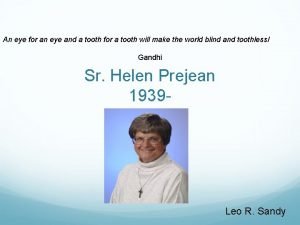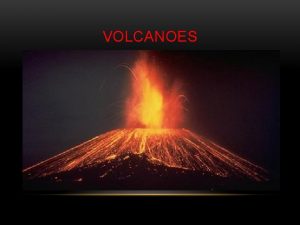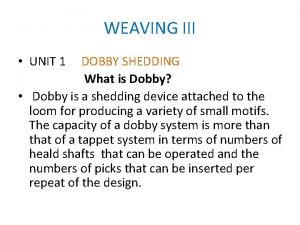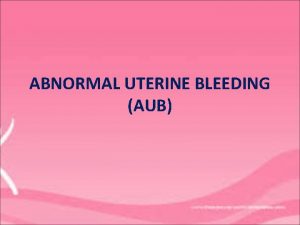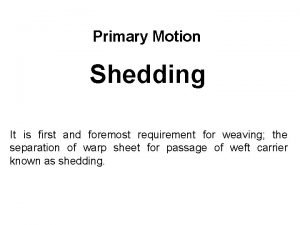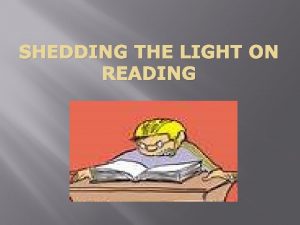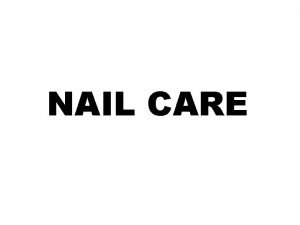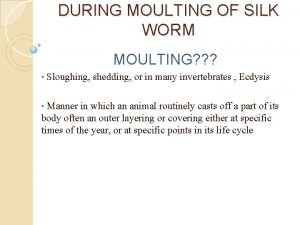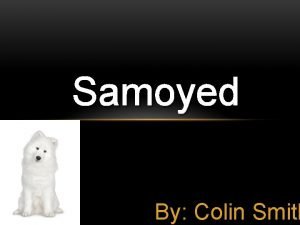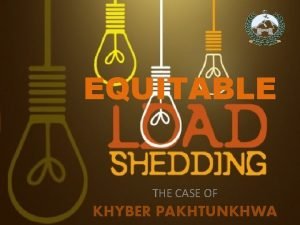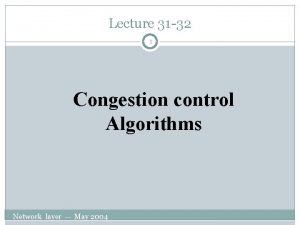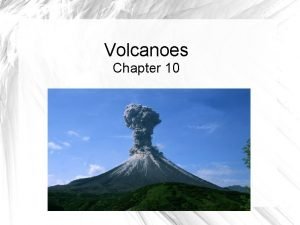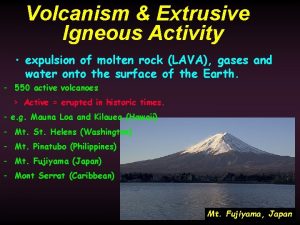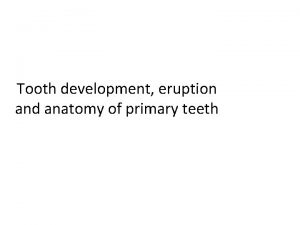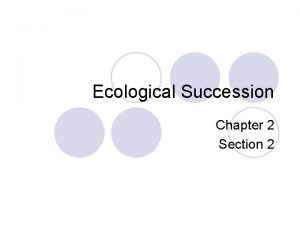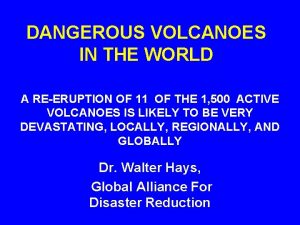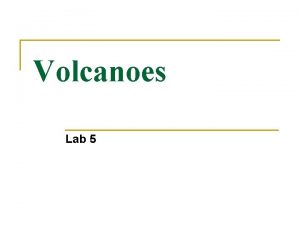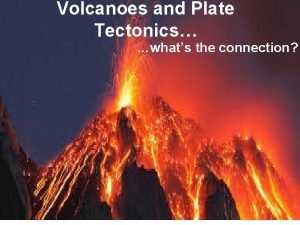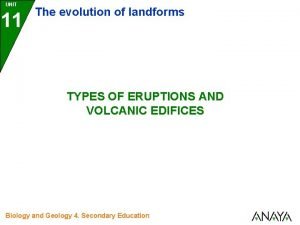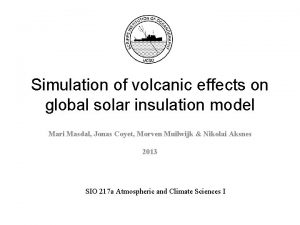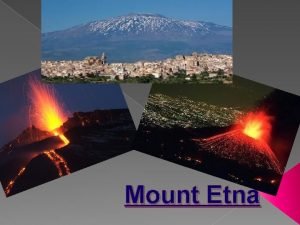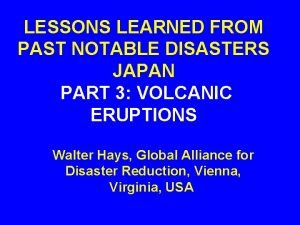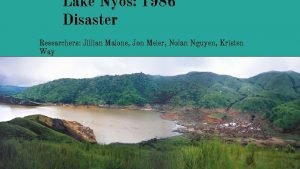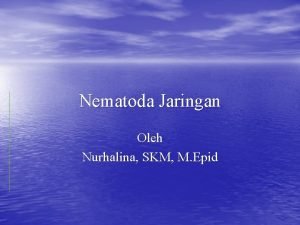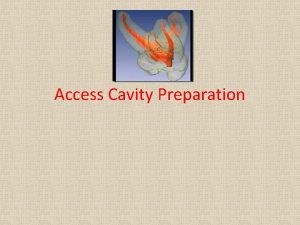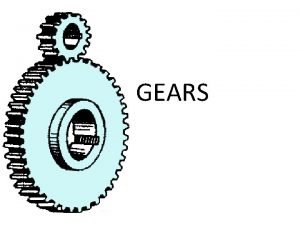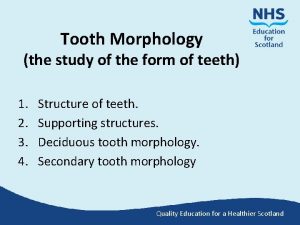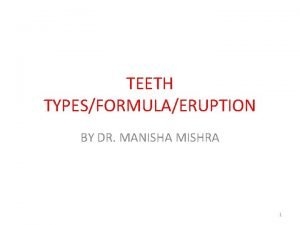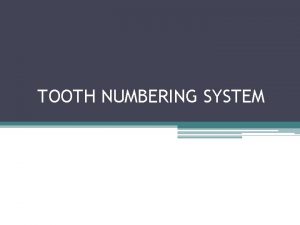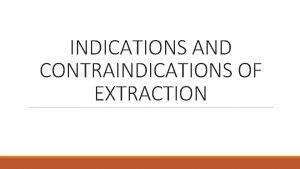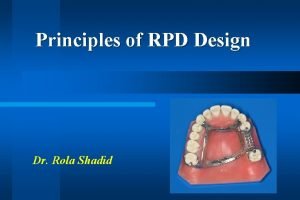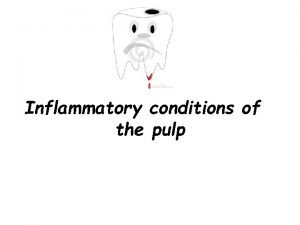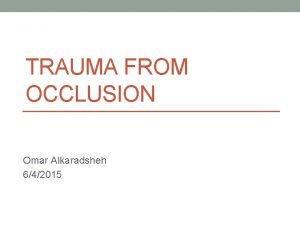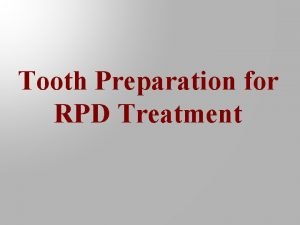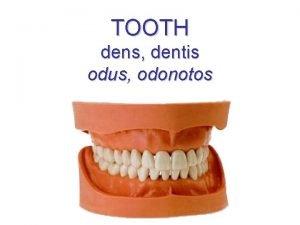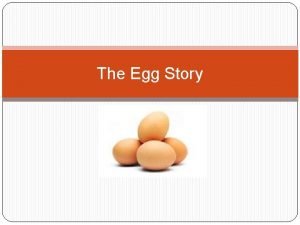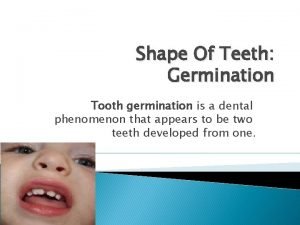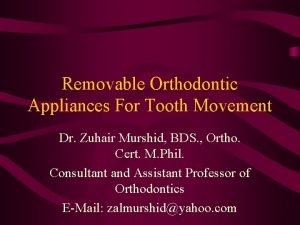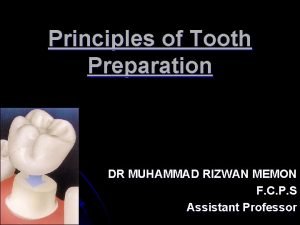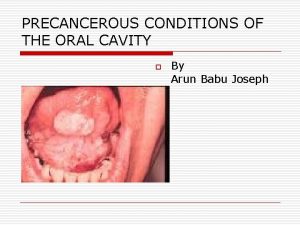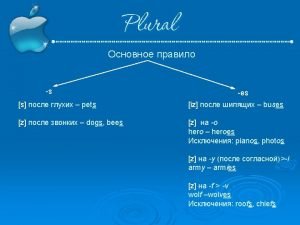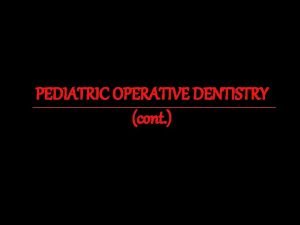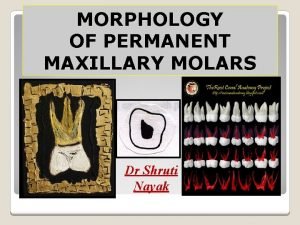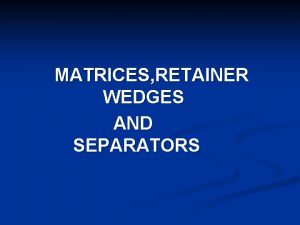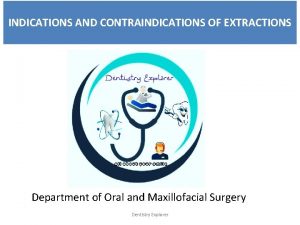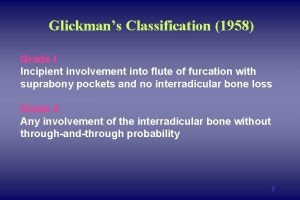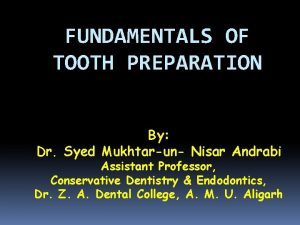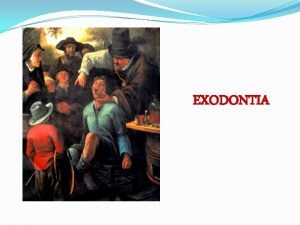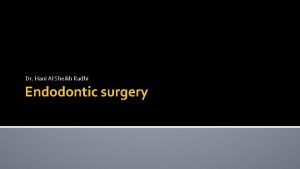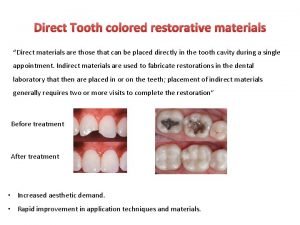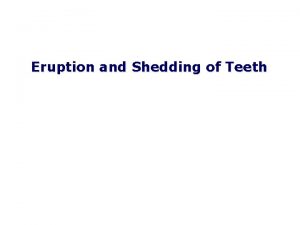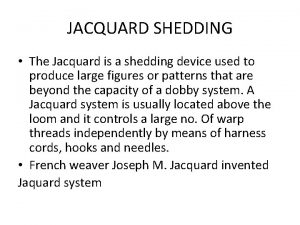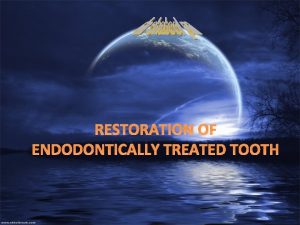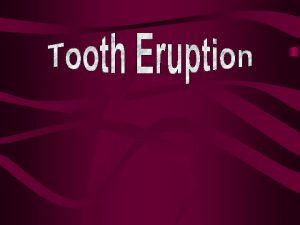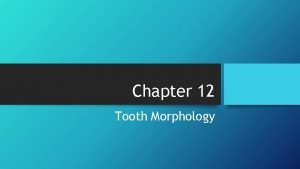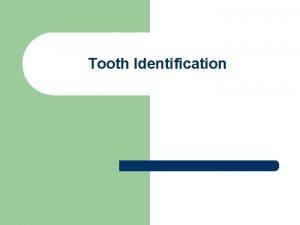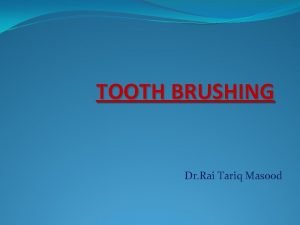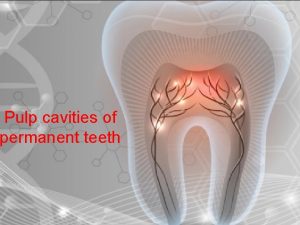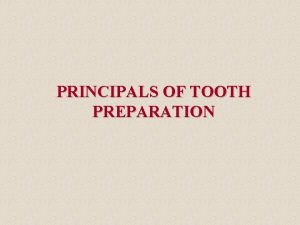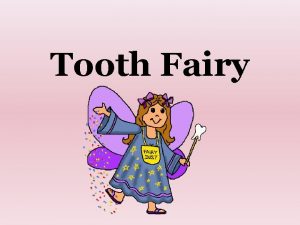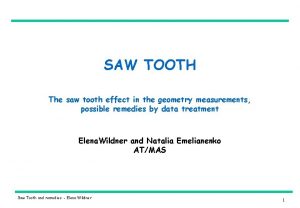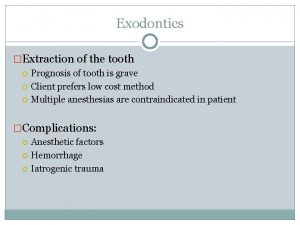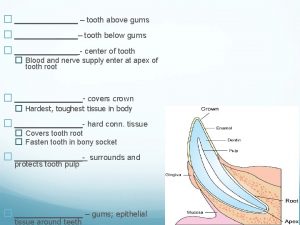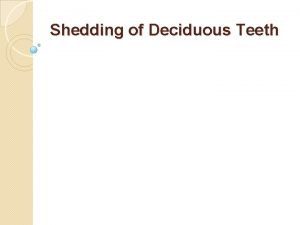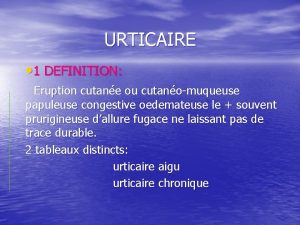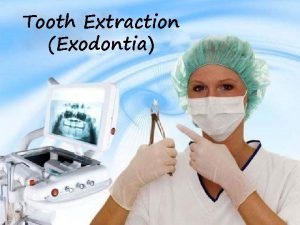TOOTH ERUPTION AND SHEDDING 1 INTRODUCTION DEFINITION v



































































- Slides: 67

TOOTH ERUPTION AND SHEDDING 1

INTRODUCTION DEFINITION v v v Eruption refers to the axial or occlusal movement of the tooth from its developmental position in the jaw to its functional position in occlusal plane. Eruption is only a part of physiologic tooth movements because teeth undergo complex movements. Physiologic tooth movement is described as: - Pre eruptive tooth movement - Eruptive tooth movement - Post eruptive tooth movement 2

v v During all, physiologic tooth movements there is progression from primary to permanent dentition which involves the shedding (exfoliation) of primary teeth. Diphyodont : Two sets of dentition in humans - Deciduous and Permanent dentition - Mixed dentition: Presence of both dentitions 3

Primary dentition: 2 to 6 years of age Mixed dentition: 6 to 12 years Permanent dentition: > 12 years 4

PHYSIOLOGIC TOOTH MOVEMENTS: 1. Pre eruptive tooth movement 2. Eruptive tooth movement 3. Post eruptive tooth movement 5

1. PRE-ERUPTIVE TOOTH MOVEMENT v Made by the deciduous and permanent tooth germs within tissues of the jaw before they begin to erupt. v When the deciduous tooth germs first differentiate, they are extremely small, there is a good deal of space for them in developing jaw. 6

v Tooth germs grow rapidly Crowded Relieved by lengthening of jaws. v This leads to deciduous second molar tooth germs to move backward anterior tooth germs to move forward. v Increase in length and width of jaw as the tooth germs are moving bodily upward/downward. 7

v Permanent anterior tooth germs develop lingual to the primary anterior teeth and later as primary teeth erupt, the permanent crowns lie at the apical 3 rd of primary roots. 8

v Premolars tooth germs are finally positioned between the divergent roots of deciduous molars. 9

v v Permanent molar tooth germs develop from backward extension of dental lamina. Upper molar tooth germs develop first with their occlusal surface facing distally and changes its position only when the maxilla has grown sufficiently. 10

v In the mandible, molar tooth germs has mesial inclination vertical sufficient jaw growth 11

HISTOLOGIC FEATURES v Remodeling of the bony wall of crypt by selective deposition and resorption of bone by osteoblasts and osteoclasts. v Normal skeletal morphogenesis might be involved in determining tooth position. 12

2. ERUPTIVE TOOTH MOVEMENT v v The axial or occlusal movement of the tooth from its developmental position within the jaw to its final functional position in the occlusal plane. The actual eruption of the tooth, when it breaks through the gum, is only one stage of eruption. 13

STAGES OF TOOTH ERUPTION 14

HISTOLOGIC FEATURES 15

HISTOLOGIC FEATURES v Significant developmental events occur associated with eruptive tooth movement like. . a) b) c) Root Formation PDL Remodelling Dentogingival Junction 16

a). ROOT FORMATION v v Root formation is initiated by the growth of the HERS which initiates the differentiation of odontoblasts from the dental papilla. The odontoblasts then form root dentin and overall increase in length of tooth occurs. 17

b). PDL REMODELLING v After the onset of root formation, cementum, PDL and the bone lining of crypt wall forms. v The remodeling of the PDL fiber bundles is achieved by fibroblasts. 18

v The fibroblasts of the PDL possess as part of their cytoskeleton intermediate filaments that consists of contractile proteins. v They exhibit frequent cell to cell contact and further specialization involving the cell membrane called as FIBRONEXUS. v Fibronectin is a sticky glycoprotein that can stick to a number of extracellular components including collagen. 19

20

THE GUBERNACULAR CANAL and its contents, THE GUBERNACULAR CORD, which may have an influence on eruptive tooth movement. 21

v As the successional tooth erupts, Gubernacular canal gets widened by local osteoclastic activity, delineating the eruptive pathway of the tooth. 22

v In the dried skull, holes can be seen in the jaws on the lingual aspects of the deciduous teeth. v Gubernacular cord have a function in guiding the permanent tooth as it erupts. 23

v The central cells of this epithelial mass degenerate and forms an epithelium line canal through which the tooth erupts without any hemorrhage. v The epithelial cell mass is also involved in the formation of DENTOGINGIVAL JUNCTION 24

v During the intraosseous phase: - The rate of eruption averages 1 to 10 µm/day. - The rate increases to about 75µm/day once the tooth escapes from the bony cell. v Environmental factors affecting the final position of the tooth: - Muscular forces - Thumb-sucking 25

3. POST ERUPTIVE TOOTH MOVEMENTS v Post eruptive movements are those made by the tooth after it has reached its functional position in the occlusal plane. v They may be divided into three categories: - Accomodation for growth. - Compensation for occlusal wear. - Accomodation for interproximal wear. 26

a) ACCOMMODATION FOR GROWTH Mostly occurs between 14 to 18 years by formation of new bone at the alveolar crest and base of socket to keep pace with increasing height of jaws. b) COMPENSATION FOR OCCLUSAL WEAR Compensation primarily occurs by continuous deposition of cementum around the apex of the tooth which occurs only after tooth moves. 27

c) ACCOMMODATION FOR INTERPROXIMAL WEAR - Compensated by mesial or approximal drift. - Mesial drift is the lateral bodily movement of teeth on both sides of the jaw. 28

Several factors control mesial drift (a) Contraction of the transseptal fibers: As the proximal surfaces of adjacent teeth become worn from functional tooth movement, the transseptal fibers of the periodontal ligament become shorter (due to contraction) and thereby maintain tooth contact. 29

(b) Adaptability of bone tissue: bone resorption, whereas pull on the fibers causes bone apposition (formation). Therefore, as the contact areas of the crowns wear, the teeth tend to move mesially, thereby maintaining the contact. 30

(c) Anterior component of occlusal force: An anteriorly directed force is generated when teeth are clenched, due to the mesial inclination of most teeth and the forwarddirected force generated from inter-cuspal forces. Eliminating opposing teeth results in elimination of biting forces, causing a slowing down of the mesial migration. (d) Pressure from soft tissues: Buccal mucosa and tongue push teeth mesially. 31

MECHANISMS OF TOOTH ERUPTION v ROOT ELONGATION: - Root formation would appear to be the obvious cause of tooth eruption since as it causes an overall increase in the length of the tooth along with the crown moving occlusally. DRAWBACK: Clinical observation, experimental studies, and histologic analysis argue strongly against such a conclusion as rootless teeth do erupt. 32

Some teeth erupt a greater distance than the total length of their roots, and teeth will still erupt after the completion of root formation. Tooth also erupt when the tissues forming the root (the papilla, Hertwig's epithelial root sheath, and periapical tissue) are surgically removed. 33

v. HYDROSTATIC PRESSURE The teeth move in their sockets in synchrony with the arterial pulse, so local volume changes can produce limited tooth movement. Ground substance can swell from 30% to 50% by retaining additional water, so this could create pressure. DRAWBACK: - ision ical associated tissues eliminates the periapical vasculature without stopping eruption, this means that the local vessels are not absolutely necessary for tooth eruption. 34

v ALVEOLAR BONE REMODELLING: - The growth pattern of the maxilla and mandible moves teeth by selective deposition and resorption of bone. Major proof is when a tooth is removed without disturbing its follicle, an eruptive pathway still forms within bone as osteoclasts widen the gubernacular canal. DRAWBACK: If the dental follicle is also removed no eruption path develops. So not sure if bone remodeling plays a significant role in tooth eruption. 35

v DENTAL FOLLICLE: - Studies have shown that the reduced dental epithelium initiates a cascade of intercellular signals that recruit osteoclasts to the follicle. By providing a signal and chemo attractant for osteoclasts, it is possible that the dental follicle can initiate bone remodeling which goes with tooth eruption. Tooth eruption is delayed or absent in human diseases that cause a defect in osteoclast differentiation. 36

v PERIODONTAL LIGAMENT: - Available evidences strongly indicate that the force for eruptive tooth movement resides in PDL. The PDL and the dental follicle from which it forms are implicated in the process of tooth eruption linked to the contractility of fibroblasts. PDL fibroblasts are able to provide a force sufficient to move the tooth, and certainly the proper structural elements exist to translate such force into eruptive tooth movement. 37

CELLULAR & MOLECULAR BASIS OF TOOTH ERUPTION 1) CELLULAR BASIS OF TOOTH ERUPTION: Prior to the onset of eruption ↓ Influx of mononuclear cells into the coronal portion of the dental follicle ↓ Increase in the numbers of osteoclasts in the coronal third of the alveolar bone (Marks et al 1983) ↓ Cellular Events 38

Influx of mononuclear cells Required formation of osteoclasts Resorb bone for the eruption pathway v Dental follicle is interposed between the alveolar bone and tooth, it is in an ideal location to regulate the cellular events of eruption and receive signals from the tooth. 39

2) MOLECULAR BASIS OF TOOTH ERUPTION: (A) ERUPTION MOLECULES v v The molecules that initiate eruption, their localization, and their regulation of the cellular events of eruption—all must fit within the context that each tooth erupts independently. Determination of the molecules that may be required for eruption began with the isolation of - EGF (Epidermal growth factor) - TGFα (Transforming Growth Factor) - Colony Stimulating Factor-1 40

TGF- α, EGF (Both utilize the same receptors & have same effect on eruption) ↑ In Incisor Eruption No effect on molar eruption Colony Stimulating Factor-1 ↑ In Molar Eruption 41

(B) LOCALIZATION OF ERUPTION MOLECULES v Studies have demonstrated that the eruption genes and their products are localized primarily in either the dental follicle or stellate reticulum. v The tissue required for eruption, the dental follicle, produces the majority of the potential eruption molecules. v The remainder of the molecules reside in the stellate reticulum adjacent to the Dental Follicle. v Like: - IL-1 (IL-1 R) – resides in dental follicle. DF-95 - resides in stellate reticulum. 42

Localization of Tooth Eruption Molecules 43

44

CONDITIONS EFFECTING TOOTH ERUPTION v Disturbances in tooth eruption commonly due to : - 1) 2) 3) 4) 5) Mechanical interferences by supernumerary teeth Crowding Odontogenic tumors and cysts Eruption sequestrum Local causes: Fibromatosis gingivae 6) Systemic causes: Rickets, cleidocranial dysplasia. 45

ANKYLOSIS When the tooth becomes ankylosed, it appears to submerge in relation to adjacent teeth that continue to erupt. 46

CLEIDOCRANIAL DYSTOSIS v v v Prolonged retention of deciduous teeth and delay in eruption of successors. Roots are somewhat shorter and thinner. Numerous unerupted supernumerary teeth seen. 47

OSTEOPETROSIS- Defects in osteoclasts v v v Retardation of tooth eruption is due to sclerosis of bone. Multiple unerupted teeth. Erupted teeth have enamel hypoplasia, dentinal defects, arrested tooth development. 48

IMPACTED TEETH v v Most commonly seen in maxillary, mandibular third molars and maxillary cuspids. Causes can be crowding in the dental arch, premature loss of deciduous teeth with migration of adjacent teeth, wrong direction of the tooth buds i. e. the long axis is not parallel to the erupting path. 49

NATAL AND NEONATAL TEETH 50

51

SHEDDING OF TEETH v v Physiologic process resulting in the complete elimination of the deciduous dentition. The need for two dentitions exists because with the increase in jaw growth more and larger teeth are required for the adult. 52

PATTERN OF SHEDDING v v Result of progressive resorption of roots of deciduous teeth and its supporting tissues. Pressure generated by the erupting permanent tooth guides the pattern of deciduous tooth resorption. 53

v v v Initially, pressure is against the root surface of deciduous tooth and resorption occurs on the lingual surface. Later these developing tooth germs occupy a position directly apical to the deciduous tooth. In mandibular incisors the apical positioning of the tooth germs does not occur and permanent tooth erupt lingually. 54

RESORPTION OF DECIDUOUS MOLARS v v Resorption of the roots of deciduous molars first begins on their inner surfaces because the early developing bicuspids are found between them. With continued growth of the jaws and occlusal movement of the deciduous molars, the successional tooth germs lie apical to the deciduous molars. 55

v When the bicuspids begin to erupt, resorption of the deciduous molars is again initiated and continues until the roots are completely lost and the tooth is shed. 56

HISTOLOGY OF SHEDDING v v v Odontoclasts are resorbing cells derived from monocyte macrophage lineage. Giant multinuclear cells with 4 -20 nuclei. Resorption occurs at the ruffled border which greatly increases the surface area of the odontoclast in contact with bone. 57

DISTRIBUTION OF ODONTOCLASTS DURING TOOTH RESORPTION v v v Found on surfaces of the roots in relation to advancing permanent tooth. Single rooted teeth shed before root resorption is completed. Odontoclasts are not found in pulp chambers of these teeth. 58

v v v In molars, the roots are completely resorbed and crown is partially resorbed. Odontoblasts layer is replaced by odontoclast. Sometimes all the dentin is removed and the vascular tissue is seen beneath the translucent cap of enamel. 59

TOOTH RESORPTION AND REPAIR v Resorption is not a continuous process but have also periods of repair. v Resorption predominates repair. v Repair is achieved by cells resembling cementoblasts. v Final repair tissue resembles cellular cementum but is less mineralized. 60

MECHANISM OF RESORPTION AND SHEDDING v v v Pressure from the erupting successional tooth and appearance of odontoclasts at the site of pressure. Membrane of ruffled border act as proton pump adding hydrogen ions to extracellular region acidification mineral dissolution. Increased forces of mastication with increase in jaw size leading to trauma to the PDL degeneration of PDL. 61

4. 5 YEARS 3. 5 YEARS 2 YEARS 1 YEAR AT BIRTH 5 MONTHS (I. U) ERUPTION TO SHEDDING OF MANDIBULAR INCISOR 62

RETAINED PRIMARY TEETH v Without permanent successors or successors are impacted. v Most common are upper lateral incisors. 63

SUBMERGED PRIMARY TEETH v v Cause can be trauma to either the dental follicle or the developing periodontal ligament. Because of continued eruption of adjacent teeth and increased height of alveolar bone, they appear “submerged”. 64

REMNANTS OF DECIDUOUS TEETH v v v Sometimes parts of the roots of deciduous teeth are not in the path of erupting permanent teeth and may escape resorption. Remnants consists of dentin and cementum. Most frequently found in permanent premolars especially in the region of lower 2 nd premolars. 65

REFERENCES 66 v TENCATE- A textbook on Oral Histology. v ORBAN’S- A textbook on Oral Histology. v Vincent Provenza- Oral Histology & Inheritance. v Critical Reviews in Oral Biology & Medicine - 13(4): 323 -335, 2002

THANK YOU 67
 An eye for an eye a tooth for a tooth sister act
An eye for an eye a tooth for a tooth sister act Traffic throttling and load shedding
Traffic throttling and load shedding Before and after mt st helens eruption
Before and after mt st helens eruption Positive dobby shedding mechanism
Positive dobby shedding mechanism Halban disease irregular shedding
Halban disease irregular shedding Negative tappet shedding mechanism
Negative tappet shedding mechanism Graphophonics
Graphophonics Vaccinr shedding
Vaccinr shedding Non shedding surface meaning
Non shedding surface meaning An envelope covering the tips of the fingers and toes
An envelope covering the tips of the fingers and toes Moulting of silkworm
Moulting of silkworm Shedding some light
Shedding some light Samoyed shedding level
Samoyed shedding level Viral shedding
Viral shedding Hebrews 9:11-14
Hebrews 9:11-14 Lesco load shedding
Lesco load shedding Load shedding in congestion control
Load shedding in congestion control Dandruff is caused by the shedding of excess cells
Dandruff is caused by the shedding of excess cells Factor affecting volcanic eruption
Factor affecting volcanic eruption Factors affecting volcanic eruption
Factors affecting volcanic eruption Stratovolcano plate boundary
Stratovolcano plate boundary Vesuvius location
Vesuvius location Eruptio difficilis
Eruptio difficilis Stages of secondary succession
Stages of secondary succession Mount rainier eruption simulation
Mount rainier eruption simulation Crater lake eruption
Crater lake eruption Volcano type of eruption
Volcano type of eruption Plate tectonics
Plate tectonics Volcano type of eruption
Volcano type of eruption Eruption 1991
Eruption 1991 Convergent plates
Convergent plates Mount etna 1669 eruption facts
Mount etna 1669 eruption facts Process of volcanic eruption
Process of volcanic eruption Mount unzen eruption 1792 facts
Mount unzen eruption 1792 facts Lake nyos
Lake nyos Obat creeping eruption
Obat creeping eruption Law of centrality endodontics
Law of centrality endodontics Gear terminology
Gear terminology Tooth morphology definition
Tooth morphology definition Fdi system of tooth numbering
Fdi system of tooth numbering Deciduous teeth dental formula
Deciduous teeth dental formula Contraindications of tooth extraction
Contraindications of tooth extraction Principles of rpd
Principles of rpd Abromil
Abromil Trauma from occlusion
Trauma from occlusion Occlusal rest seat preparation
Occlusal rest seat preparation Histodifferentiation stage of tooth development
Histodifferentiation stage of tooth development Ectomesenchyme
Ectomesenchyme Egg tooth
Egg tooth Tooth germination
Tooth germination Tooth decay science fair project graph
Tooth decay science fair project graph Retentive component of a removable appliance
Retentive component of a removable appliance Axial reduction
Axial reduction Differential diagnosis of osmf
Differential diagnosis of osmf Foot feet tooth teeth
Foot feet tooth teeth Tooth во множественном числе
Tooth во множественном числе Class v retention grooves
Class v retention grooves Night by elie wiesel citation
Night by elie wiesel citation Cusp of carabelli
Cusp of carabelli Separators in conservative dentistry
Separators in conservative dentistry Indications and contraindications of extraction
Indications and contraindications of extraction Sharp in public health dentistry
Sharp in public health dentistry Curative care
Curative care Glickman's furcation classification
Glickman's furcation classification Skirt in tooth preparation
Skirt in tooth preparation Stamford raffles
Stamford raffles Tooth root abnormalities
Tooth root abnormalities Tooth colored restorative materials
Tooth colored restorative materials
